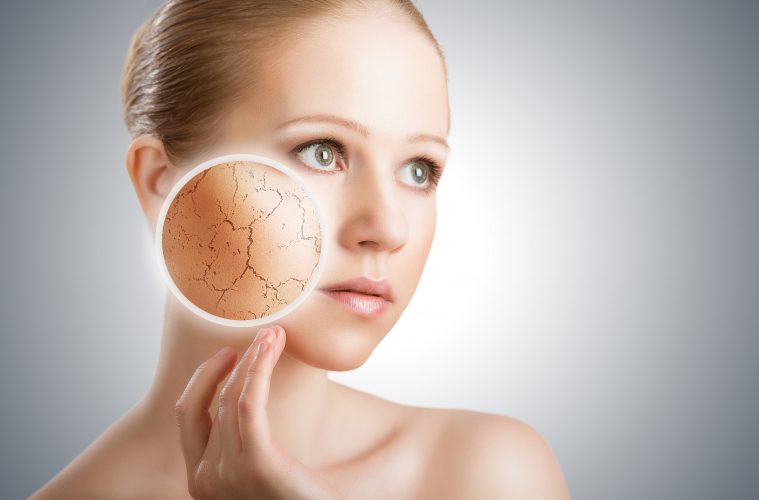
A study released by the University of California, Berkeley (UBC) School of Public health has found many conventional lipstick products to contain dangerously high levels of aluminum, cadmium, lead, and other toxins. Researchers tested over 30 popular lipstick products and found this to be the case. The study was published in the journal Environmental Health Perspectives. Even women using minimal amounts of product still increase their risk of developing harmful health conditions like nerve damage and cancer by an alarming amount.
According to the study:
Most of the tested lip products contained high concentrations of titanium and aluminum. All examined products had detectable manganese. Lead was detected in 24 products (75%), with an average concentration of 0.36 ± 0.39 ppm, including one sample with 1.32 ppm. When used at the estimated average daily rate, estimated intakes were > 20% of ADIs derived for aluminum, cadmium, chromium, and manganese. In addition, average daily use of 10 products tested would result in chromium intake exceeding our estimated ADI for chromium. For high rates of product use (above the 95th percentile), the percentages of samples with estimated metal intakes exceeding ADIs were 3% for aluminum, 68% for chromium, and 22% for manganese. Estimated intakes of lead were < 20% of ADIs for average and high use.
A daily intake of these cosmetics would result in a large exposure to chromium, a carcinogen that has been linked to stomach tumours. Average use of these products could result in overexposure to aluminum, cadmium, and manganese. Exposure to high concentrations of manganese has been linked to high toxicity levels in the nervous system. Lead was also detected, and no level of lead exposure is safe for anybody.
“Just finding these metals isn’t the issue; it’s the levels that matter. Some of the toxic metals are occurring at levels that could possibly have an effect in the long term.”
– Katharine Hammond, professor of environmental health sciences and principal investigator in the study.
The amount of metals found definitely needs to be brought to the attention of health regulators. But we have a problem here, as health regulators are usually connected to the corporations that develop these products in the first place. The real solution is to just stop using them. We are sold on the idea that we need these beauty products and yet they are filled with harmful chemicals. Are we not beautiful anyway? Right now there are no standards in the United States for metal content in cosmetics, which is deeply disturbing. They can pretty much put whatever they please into them, and it doesn’t take long for the bloodstream to absorb whatever we put onto bodies.
The truth is, many of the ingredients in personal care and beauty products aren’t so pretty. U.S. researchers have found that one in eight of the 82,000 ingredients used in cosmetic and personal care products are hazardous industrial chemicals. This means that 10,500 industrial chemicals are used as cosmetic ingredients, many of which are carcinogens, pesticides, reproductive toxins, endocrine disruptors, plasticizers (chemicals that keep concrete soft), degreasers (used to get grime off auto parts), and surfactants (they reduce surface tension in water, like in paint and inks). And these go on our skin and into the environment.
Did you know that everyday chemical exposure is among the leading causes of the most common cases of chronic disease in America?
What Happens To Your Body When You Switch or Stop Using Cosmetic Products
A new study led by researchers at UC Berkeley and Clinica de Salud del Valle Salinas has demonstrated how taking even a short break from various cosmetics, shampoos, and other personal care products can lead to a substantial drop in the levels of hormone-disrupting chemicals present within the body.
The results from the study were published in the journal Environmental Health Perspectives. Researchers gave 100 Latina teenagers various personal care products that were labelled to be free of common chemicals including phthalates, parabens, triclosan, and oxybenzone. These chemicals are used regularly in almost all conventional personal care products such as cosmetics, soap, sunscreen, shampoo, conditioner, and other hair products, and animal studies have shown that they directly interfere with the body’s endocrine system.
“Because women are the primary consumers of many personal care products, they may be disproportionately exposed to these chemicals,” said study lead author Kim Harley, Associate Director of the UC Berkeley Center for Environmental Research and Children’s Health. “Teen girls may be at particular risk since it’s a time of rapid reproductive development, and research has suggested that they use more personal care products per day than the average adult woman.”
Results
After just a three-day trial with the girls using only the lower-chemical products, urine samples showed a significant drop in the level of chemicals in the body. Methyl and propyl parabens, commonly used as preservatives in cosmetics, dropped 44% and 45%, respectively, while metabolites of diethyl phthalate, used often in perfumes, dropped by 27%, and both triclosan and benzophenone-3 fell 36%. The authors of the study were surprised to see an increase in two lesser common parabens, but those levels were small and could easily be caused by accidental contamination or a substitute not listed on the labels.
Co-director of the study Kimberly Parra explains why having local youths participate in the study was of particular importance:
The results of the study are particularly interesting on a scientific level, but the fact that high school students led the study set a new path to engaging youth to learn about science and how it can be used to improve the health of their communities. After learning of the results, the youth took it upon themselves to educate friends and community members, and presented their cause to legislatures in Sacramento.
Included in the CHAMACOS Youth Council were 12 local high school students who helped design and implement the study; one of the teen researchers, Maritza Cárdenas, is now a UC Berkely Undergraduate majoring in molecular and cell biology.
“One of the goals of our study was to create awareness among the participants of the chemicals found in everyday products, to help make people more conscious about what they’re using,” said Cárdenas. “Seeing the drop in chemical levels after just three days shows that simple actions can be taken, such as choosing products with fewer chemicals, and make a difference.”
What Can You Do?
Well, you can be sure to check the labels on any products you purchase. Most personal care products contain a list of ingredients, but unfortunately many cosmetics do not. If you use a particular brand that you really love you can try contacting the manufacturer directly and asking them for an ingredient list.
You can also opt for more natural and organic products, but be sure to keep in mind that in the industry of personal care products, the words “natural” and “organic” are often meaningless. A safe bet would be to buy these products from a health food store and be sure to read the ingredients or ask the sales clerk. Generally, when products do not contain specific chemicals, the manufacturers are happy to label them as such.
Because actually natural and organic products can be a bit more pricey, you may want to consider making your own. You can make a wide array of completely natural personal care products quite easily with just a few ingredients. Not only is this cheaper, but it allows you to be sure of every ingredient that will go on your body and to customize your creations to suit your specific needs. Check out “Top 5 DIY Everyday Personal Care Products” for some great homemade make-up ideas, or try a quick Google or Pinterest search!
The less demand for these chemically-laden products there is, the less these chemicals will be used. I’ve said it before and I’ll say it again: VOTE WITH YOUR DOLLAR! We have the power to create the type of world we want. Be the change.
Check out The Story Of Cosmetics below!
Sources:
(1) http://ehp.niehs.nih.gov/1205518/
(2)http://newscenter.berkeley.edu/2013/05/02/toxic-metals-in-lipstick/
http://www.naturalnews.com/040281_lipstick_heavy_metals_cadmium.html
Disclaimer: We at Prepare for Change (PFC) bring you information that is not offered by the mainstream news, and therefore may seem controversial. The opinions, views, statements, and/or information we present are not necessarily promoted, endorsed, espoused, or agreed to by Prepare for Change, its leadership Council, members, those who work with PFC, or those who read its content. However, they are hopefully provocative. Please use discernment! Use logical thinking, your own intuition and your own connection with Source, Spirit and Natural Laws to help you determine what is true and what is not. By sharing information and seeding dialogue, it is our goal to raise consciousness and awareness of higher truths to free us from enslavement of the matrix in this material realm.
Português
 EN
EN FR
FR

























